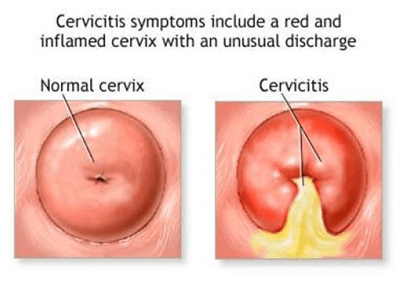Cervicitis is an inflammation of the cervix, the lower, narrow end of the uterus that opens into the vagina.
A middle aged, married lady complains of constant vaginal discharge- a glairy material, like the white of an egg. At times, it is muco-purulent. In addition to this discharge, there is backache and pelvic of lower abdominal pain. The condition is called CERVICITIS
Symptoms
Most often, cervicitis causes no signs and symptoms, If you do have signs and symptoms, they may include:
- Large amounts of unusual vaginal discharge
- Frequent, painful urination
- Pain during intercourse
- Bleeding between menstrual periods
- Vaginal bleeding after intercourse, not associated with a menstrual period
Causes
Possible causes of cervicitis include:
- Sexually transmitted infections
- Allergic reactions. An allergy, either to contraceptive spermicides or to latex in condoms, may lead to cervicitis. A reaction to feminine hygiene products, such as douches or feminine deodorants, also can cause cervicitis.
- Bacterial overgrowth. An overgrowth of some of the bacteria that are normally present in the vagina (bacterial vaginosis) can lead to cervicitis.
Risk factors
- Engage in high-risk sexual behavior, such as unprotected sex, sex with multiple partners or sex with someone who engages in high-risk behaviors
- Began having sexual intercourse at an early age
- Have a history of sexually transmitted infections
Prevention
To reduce your risk of cervicitis from sexually transmitted infections, use condoms consistently and correctly each time you have sex. Condoms are very effective against the spread of STIs, such as gonorrhea and chlamydia, which can lead to cervicitis. Being in a long-term relationship in which both you and your uninfected partner are committed to having sex with each other exclusively can lower your odds of an STI.

